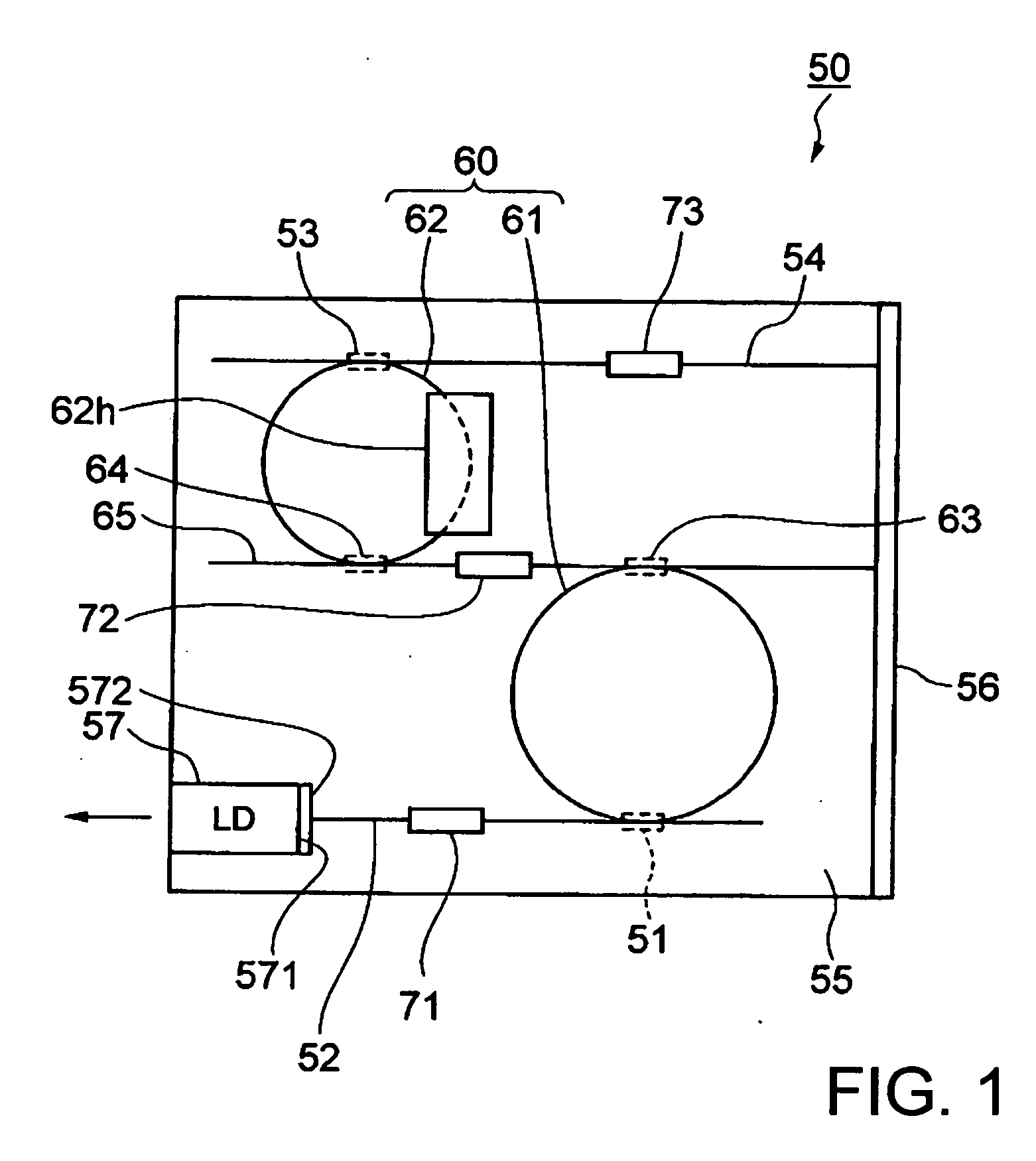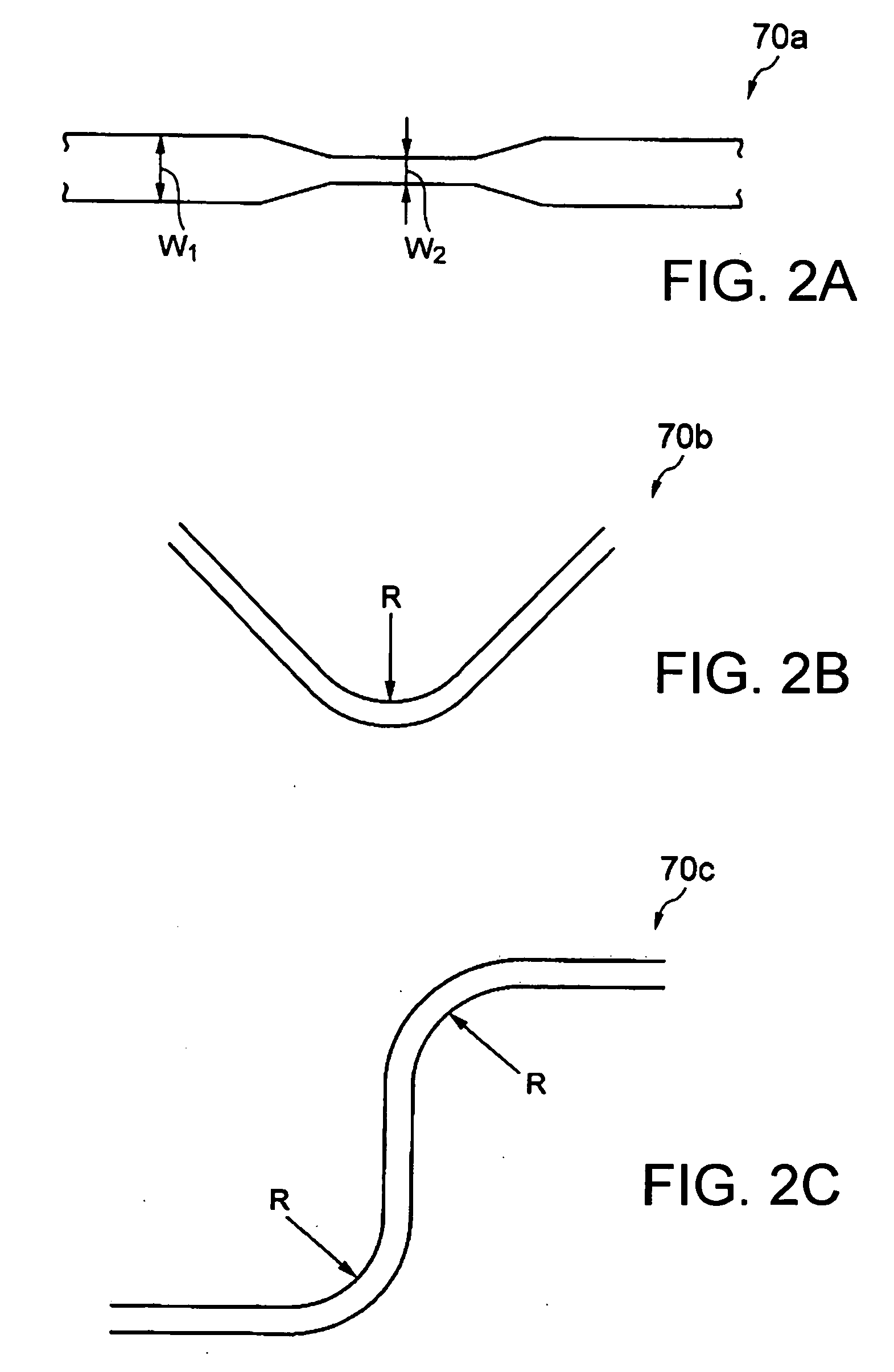Tunable laser
a laser and tunable technology, applied in the field of tunable lasers, can solve the problems of high shelf control cost, difficult to tune the dfb-ld for a wide range, and the problem of dfb-ld-based wdm transmission system, etc., and achieve the effects of low cost, high reliability, and high performan
- Summary
- Abstract
- Description
- Claims
- Application Information
AI Technical Summary
Benefits of technology
Problems solved by technology
Method used
Image
Examples
first embodiment
[0035] Tunable laser 50 according to the present invention, shown in FIG. 1, has PLC substrate 55 with multiple ring resonator 60, input / output side waveguide 52, and reflection side waveguide 54 being disposed thereon. Multiple ring resonator 60 comprises two ring resonators 61, 62 having respective ring-shaped waveguides and respective different optical path lengths. Ring resonators 61, 62 are coupled to each other by directional couplers 63, 64 and coupling waveguide 65 thereby constituting multiple ring resonator 50. Input / output side waveguide 52 has an end coupled to ring resonator 61 by directional coupler 51. Reflection side waveguide 54 has an end coupled to ring resonator 62 by directional coupler 53. The other end of reflection side waveguide 54 extends to an end of PLC substrate 55 on which highly reflecting film 56 is disposed as an optical reflector. Light that is propagated through reflection side waveguide 54 to the other end thereof is reflected by highly reflecting...
second embodiment
[0055] Tunable laser 10 according to the present invention, shown in FIG. 3, has PLC substrate 15 with multiple ring resonator 20, input / output side waveguide 12, and reflection side waveguide 14 being disposed thereon. Multiple ring resonator 20 comprises three ring resonators 21, 22, 23 that are coupled by directional couplers 24, 25, 26, 27 and coupling waveguide 28, 29. Coupling waveguide 28 is coupled to ring resonators 21, 22 by respective directional couplers 24, 25, and coupling waveguide 29 is coupled to ring resonators 22, 23 by respective directional couplers 26, 27. Mode filters 31, 32, 33, 34 for preventing light in high-order modes from being introduced into multiple ring resonator 20 and propagating only light in a fundamental mode in multiple ring resonator 20 are built respectively in input / output side waveguide 12, coupling waveguide 28, coupling waveguide 29, and reflection side waveguide 14. Each of mode filters 31, 32, 33, 34 has a structure which may be in the ...
PUM
 Login to View More
Login to View More Abstract
Description
Claims
Application Information
 Login to View More
Login to View More - R&D
- Intellectual Property
- Life Sciences
- Materials
- Tech Scout
- Unparalleled Data Quality
- Higher Quality Content
- 60% Fewer Hallucinations
Browse by: Latest US Patents, China's latest patents, Technical Efficacy Thesaurus, Application Domain, Technology Topic, Popular Technical Reports.
© 2025 PatSnap. All rights reserved.Legal|Privacy policy|Modern Slavery Act Transparency Statement|Sitemap|About US| Contact US: help@patsnap.com



